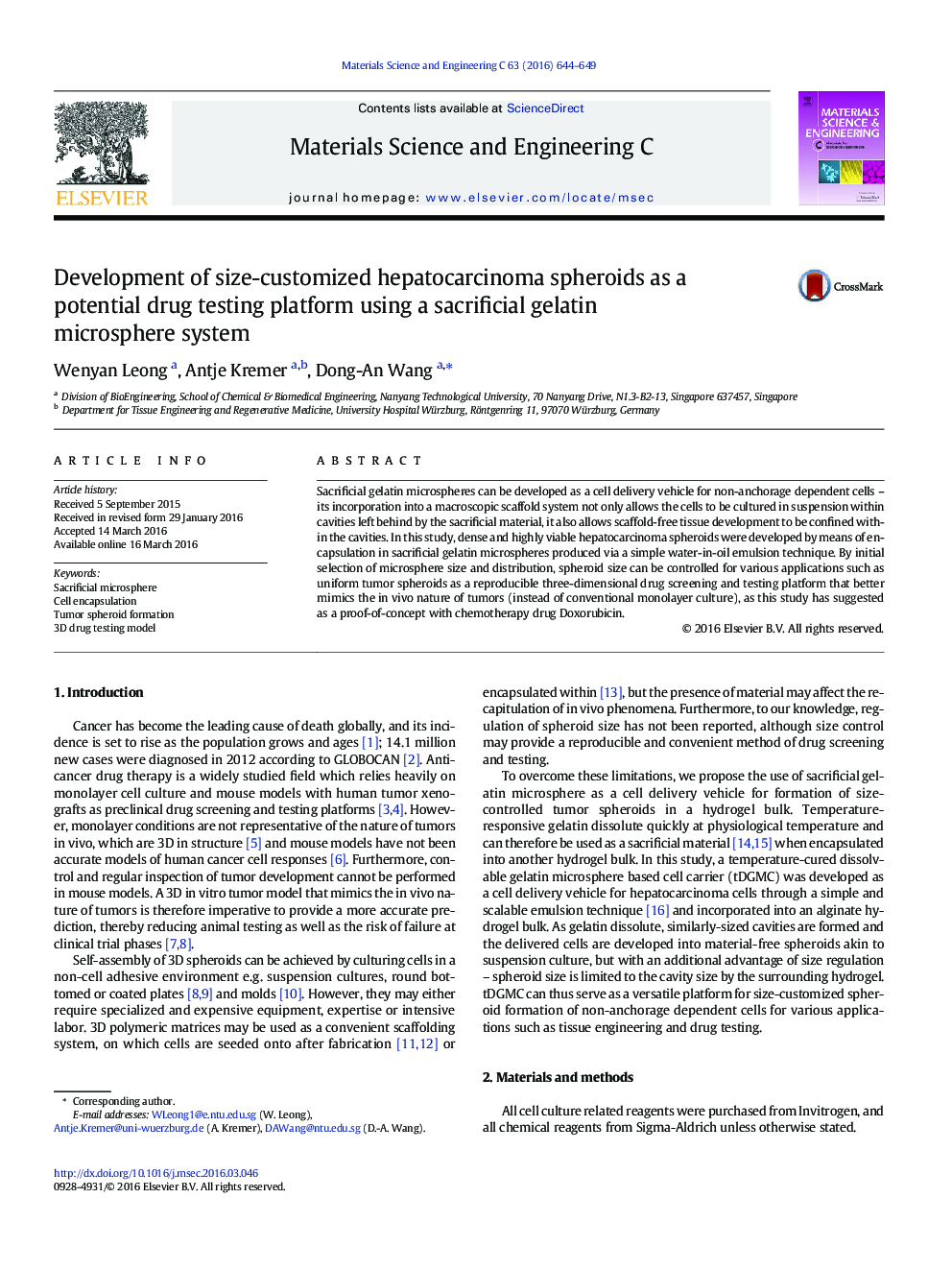| Article ID | Journal | Published Year | Pages | File Type |
|---|---|---|---|---|
| 1428058 | Materials Science and Engineering: C | 2016 | 6 Pages |
•HepG2 cells encapsulated in sacrificial microspheres are delivered into alginate.•Dense viable tumor spheroids are formed through suspension culture in cavities.•Tumor spheroid size is customizable by selection of gelatin microsphere size.•Uniform-sized tumor spheroids are fabricated in a simple and quick manner.
Sacrificial gelatin microspheres can be developed as a cell delivery vehicle for non-anchorage dependent cells – its incorporation into a macroscopic scaffold system not only allows the cells to be cultured in suspension within cavities left behind by the sacrificial material, it also allows scaffold-free tissue development to be confined within the cavities. In this study, dense and highly viable hepatocarcinoma spheroids were developed by means of encapsulation in sacrificial gelatin microspheres produced via a simple water-in-oil emulsion technique. By initial selection of microsphere size and distribution, spheroid size can be controlled for various applications such as uniform tumor spheroids as a reproducible three-dimensional drug screening and testing platform that better mimics the in vivo nature of tumors (instead of conventional monolayer culture), as this study has suggested as a proof-of-concept with chemotherapy drug Doxorubicin.
